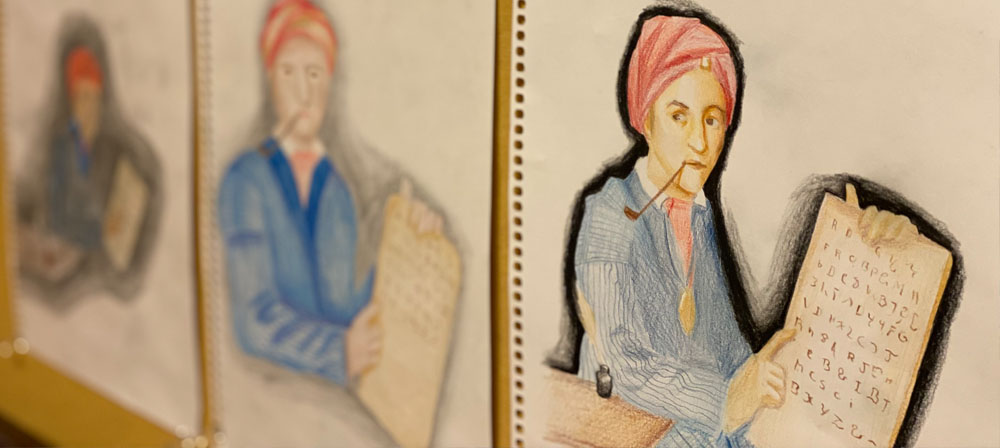Indigenous Studies
||| Indigenous Peoples are a vital part of our curricula throughout the year. Our Faculty is always striving to find creative and evolving ways to bring the stories and histories, the cultures and wisdoms of indigenous peoples to the children. These themes are brought developmentally, as is all of our content. This means that not only are we bringing what the children are able to comprehend and relate to at their age, but also that the content is brought in ways that meet what is living most strongly in the inner lives of the children at different developmental stages.
For example, in Fourth Grade, children experience a deep desire to explore the world around them. The Waldorf approach asks them to start where they are—literally with the Earth beneath their feet. They observe the landscape and what it looks like. Indigenous history meets them in a profound way as they learn about the land and the people who have been on it since time immemorial. How did they interact with it? How did they feed, clothe, and shelter themselves within the context of their relationship to this land?
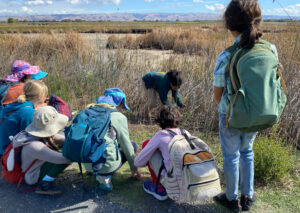 |
Our current Fourth grade teacher, Sydney Borstel, has thus focused on the Ohlone, who are the original stewards of this land. In a field trip to Coyote Hills Regional Park, the naturalist took them on a walk through the marshes, showing them soaproot, tule reeds, and pickleweed. The students were able to step inside a tule reed hut, and gaze at a diorama reconstruction of a traditional Ohlone village, making much of what they had been hearing about history come alive. The children played traditional Ohlone games, and back in the classroom they constructed tule reed mats. |
Another field trip took them to the Ohlone Cafe, Mak-’amham, which is just blocks away from our school. There they met up with the Fourth Grade class from Golden Bridges School in San Francisco, and had the opportunity to meet and hear from Vincent Medina and Louis Trevino, partners and Ohlone activists. The children ate chia seed brownies and drank rosehip tea, while hearing that Ohlone people are still very much here even though the landscape has changed dramatically. Their languages, foods and cultures are living and evolving. They realized that acorns are collected for food in the present, not just in the past!
Another outing to Mount Tamalpais in Marin County introduced the children to the culture of the Miwok peoples in that landscape and the children themselves collected acorns. Mrs. Borstel has emphasized the abundance of Native California—rich in food sources and materials for basket weaving, jewelry making, and shelter construction. In this way, indigenous culture and experience are real and present for the Fourth Grader, directly experienced on a landscape that is around them all the time.
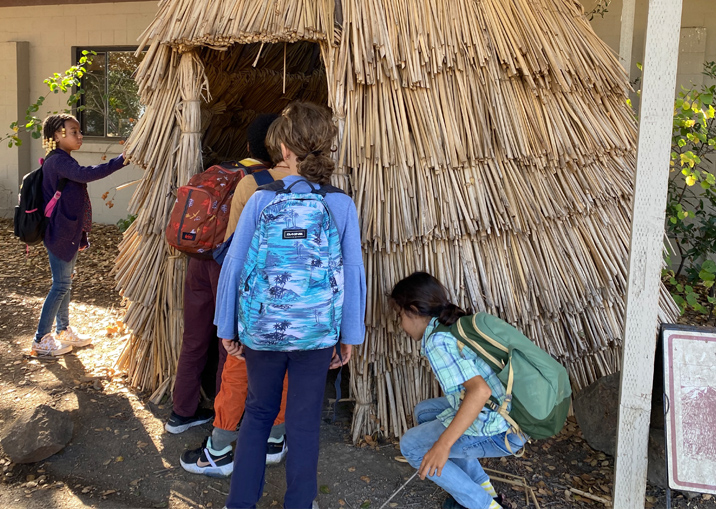
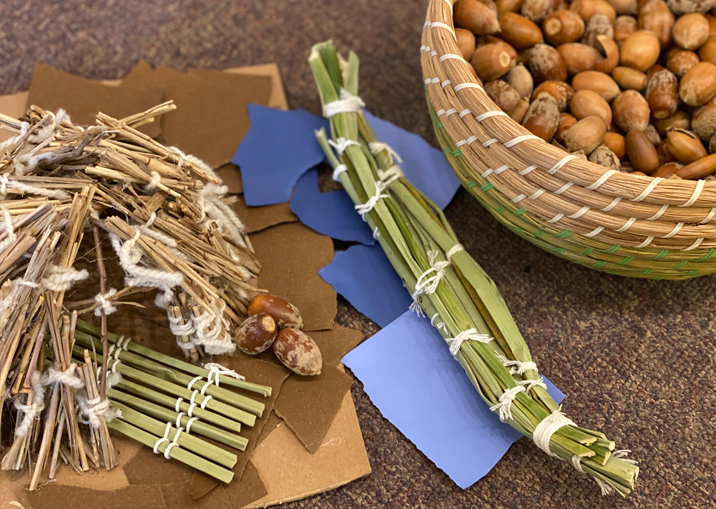
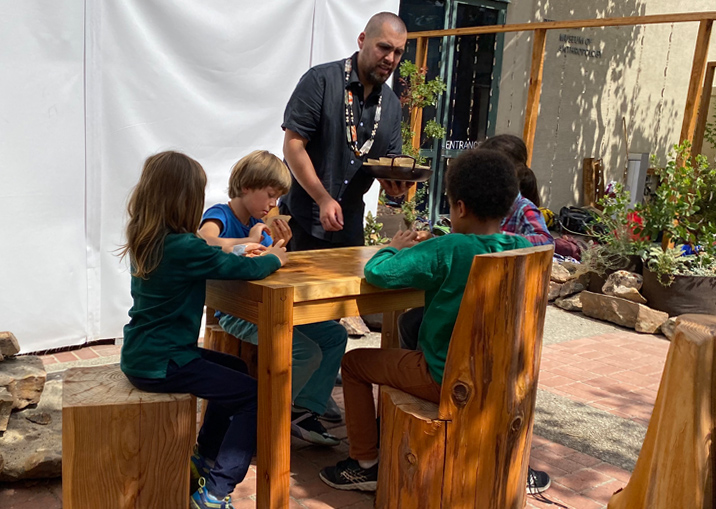
For the first two weeks of our first U.S. history block, I tried to keep Native people at the center of the story. We began with a week focused on some of the Nations who lived in the Northeast region of the U.S., before the arrival of English colonists, including the story of the Iroquois League and the Great Law of Peace. Next we studied the early relations between the Jamestown colonists and the Powhatan Confederacy and the Plymouth colonists and the Wampanoag. We looked at primary sources and historical images to try to sift through the mythology around the stories of Pocahontas and the first Thanksgiving feast. As we continue on with the Thirteen colonies and the birth of the U.S.A., we will look back again at how the Constitution and government of the U.S. was inspired by the Iroquois Great Law of Peace, among other things.
As part of our cyber civics curriculum, we have been looking at which stories about Native Americans are published in media platforms with different political and ideological perspectives.
We have also been drawing portraits of famous Native figures such as Tecumseh and Sequoyah.
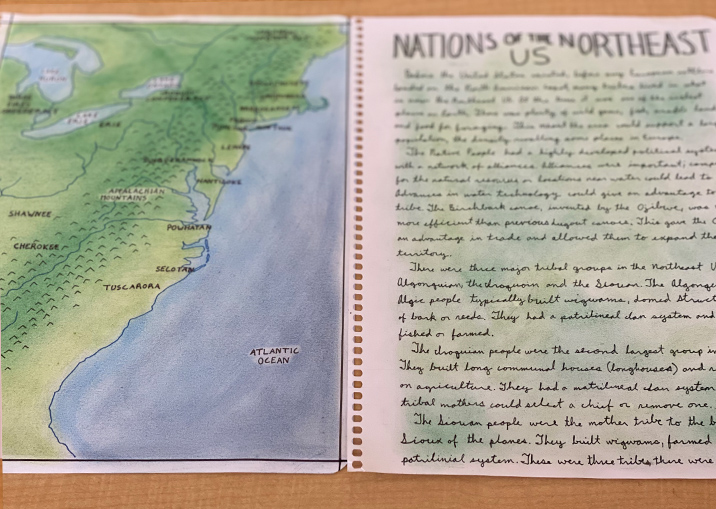
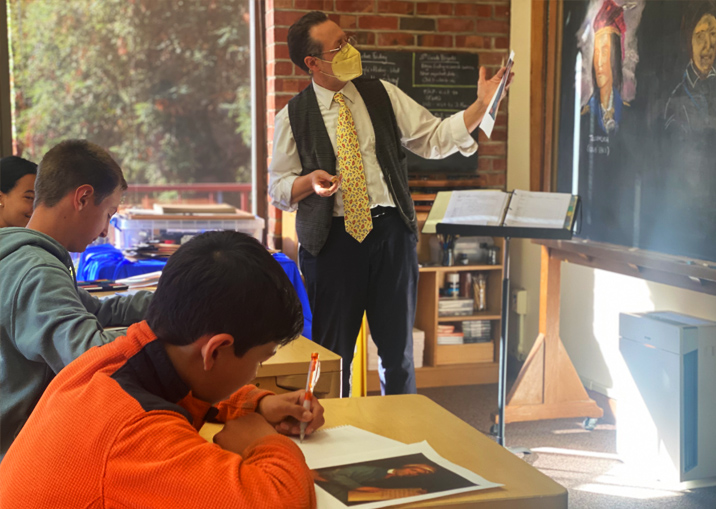
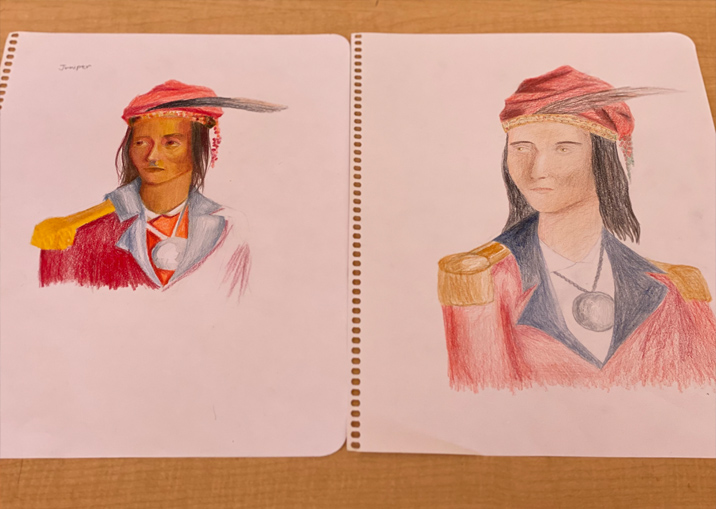
And now I ask you as an adult in this community, perhaps a parent at Berkeley Rose, what are you doing to educate yourself about indigenous peoples? In Waldorf, we believe that what is living in the community educates the children as much as what they are taught in classrooms. So as we educate ourselves, what lives in us raises the consciousness of the children as well, even if they may not yet be old enough to be taught about it directly.
Here are a few things that I have done recently to further educate myself:
-
- Watched this video presentation by the Ohlone Sisters, who we are hoping to bring to the school this Fall to share their culture with the students. The sisters begin their presentation about 15 minutes into the video, and their hour long talk ends with a video about a tule canoe project they did at Coyote Hills with Ohlone youth.
- Watched this video of Vincent Medina telling the traditional story of the Blood Monster in Chochenyo. He also tells the story in this video with a more complete translation.
- Read this book which tells a first person account of indigenous life in the Sierra foothills. (Let me know if you would like to borrow it!)
- Watched this short video—shared by Erin Lashnits Herman, a leader of our WIDE Committee—about land access and cultural revitalization.
- Watched this 2-minute video with Vincent and Louis talking about foraging.
- Re-watched this 10-minute video by Oren Lyons about The Peacemaker and The Tadadaho
- Watched this 17-minute video of Russell Means making a statement to the US Senate in 1987.
- Revisited this NYT article from 2005 about The Founding Sachems of America
- Revisited this article by M. Kat Anderson about the food management practices of Native California (I wrote about the book that this article is taken from in this piece on Medium).
How about you? Please email office@berkeleyrose.org to share with us any recent self-education you have done around indigenous history and peoples! We’d love to add your resources to this list.
–Jessica Prentice
School Director

